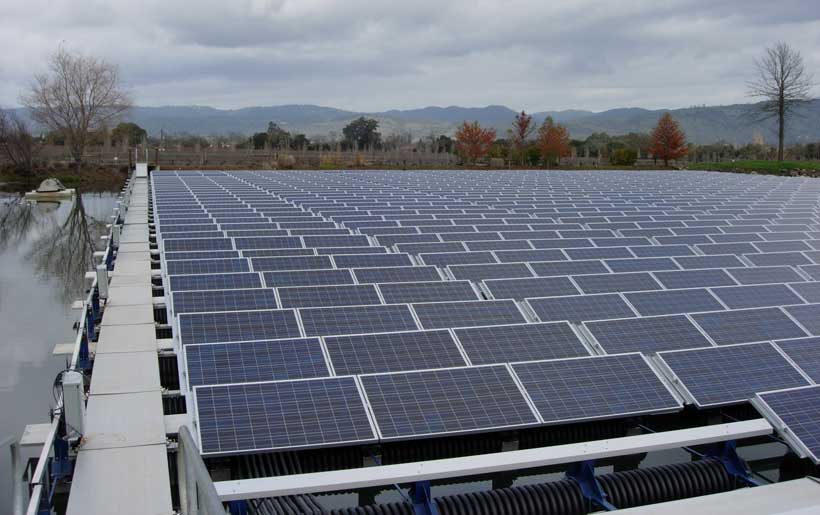Authors: Manish Kumar and Sanjay Kumar Kar*
India’s renewable energy (RE) journey has reached a significant milestone, with the country’s total RE capacity surpassing 154 GW by the end of September 2024. India’s renewable progress reflects its growing commitment to clean energy and a greener future. It is evident that solar power with a capacity of 90.76 GW contributes a 58.7 percent to cumulative RE capacity addition. It is anticipated that solar will continue to transform India’s renewable landscape. The 500 GW of RE capacity by 2030 is well and truly within the reach.
While traditional land-based solar farms have driven much of this progress, India is now exploring innovative solutions to meet its rising energy demands and address land constraints. Floating Solar Photovoltaics (FSPV) emerges as a promising alternative solution. Currently, India’s current installed FSPV capacity of 200 MW, is just 2 percent of the 10 GW by 2030. To achieve the target, an average 1.6 GW of annual capacity addition will be required by 2030. This technology offers a significant potential to complement the existing solar initiatives and further diversify India’s RE portfolio.
FSPV involves installing solar panels on water bodies such as reservoirs, dams, and ponds, where the panels are mounted on pontoon-based structures that float on the surface. These systems are anchored and moored to remain in place, utilizing water surfaces to generate clean energy without competing for land. FSPV addresses land constraints and reduces water evaporation from water bodies. One of the key advantages of FSPV is its ability to boost energy production compared to fixed solar installations. The proximity of panels to water creates a cooling effect, improving efficiency and energy output. Moreover, FSPV can be deployed in water bodies adjacent to existing power plants, allowing the use of extant electrical infrastructure. The synergy between FSPV and hydroelectric power plants is particularly valuable, as it enables complementary operations and reduces algae growth in water reservoirs.
FSPV installations are relatively expensive than traditional fixed solar systems due to the need for specialized floating platforms and the complexities of maintenance in water environments. The cost of fixed solar installations ranges from ₹40-50 per watt peak (Wp), while floating solar can cost between ₹45-65 per Wp. Long-term benefits of FSPV, such as water conservation, land neutrality, and higher energy yields, make it an attractive option for India’s energy transition. Tapping into the large water bodies, including reservoirs, dams, and coastal areas could be an advantage. States like Gujarat, Maharashtra, Kerala, and Odisha, Andhra Pradesh, etc, have substantial potential for PSPV projects. Gujarat’s model of implementing PSPV (canal-top solar projects) is good lesson for other states to replicate. Additionally, public-private partnerships can combine expertise, investment, and technological advancements, further driving the growth of this innovative energy solutions.
While the benefits of FSPV are clear, several challenges such as lack of FSPV-specific standards and technical guidelines, limited data on water bodies, and safety and long-term reliability of FSPV components need immediate attention. To overcome these challenges, the government may prioritize the development of FSPV-specific standards, promote local manufacturing, and encourage research on the environmental impact of FSPV installations.
India’s stride to achieve Net Zero by 2070 strongly hinges on indigenous solutions like FSPV, which offers a promising path forward, leveraging the country’s vast water resources to generate clean energy while addressing land constraints and environmental challenges. However, for FSPV to truly take off, it is crucial to address the technical, environmental, and regulatory hurdles it faces. Developing clear standards, conducting thorough environmental assessments, and sharing knowledge and performance data will be essential to unlocking the full potential of this technology. By doing so, India can ensure that FSPV becomes a vital component of its RE landscape, contributing to the country’s sustainability goals and helping to meet the growing demand for clean, reliable energy.
*Sanjay Kumar Kar, Professor, Rajiv Gandhi Institute of Petroleum Technology, Jais, India
